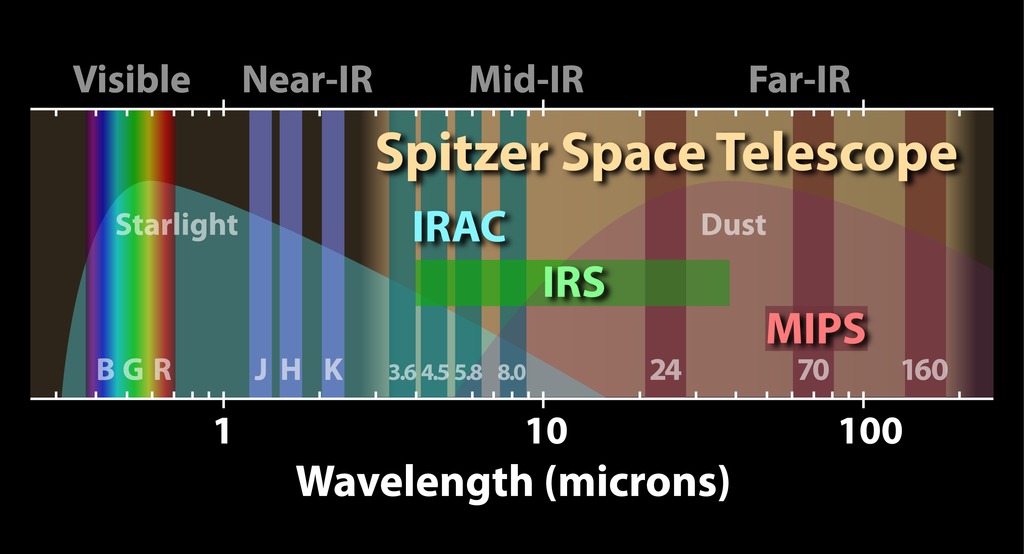
Artwork • July 13th, 2007 • sig07-011
sig07-011
NASA's Spitzer Space Telescope is an infrared eye onto the universe. This diagram illustrates just where Spitzer's vision extends in the spectrum of light, shown as a horizontal band.Vertical bars indicate the different regions of the electromatic spectrum. On the left is the visible spectrum, covering the extent of human vision. Next are the J, H, and K bands commonly used by ground-based infared observatories. On the right are the wavelengths spanned by Spitzer's detectors. The Spitzer Space Telescope's three science instruments operate in the mid- to far-infrared between 3 and 160 microns.The Infrared Array Camera (IRAC) takes images at four fixed wavelenths ranging from 3.6 to 8.0 microns.The Infrared Spectrograph (IRS) has four modules that break light into a spectrum of infrared colors, much like a prism. These detectors range from 5.3 to 40 microns.The Multiband Imaging Photometer for Spitzer (MIPS) takes images at three fixed wavelengths ranging from 24 to 160 microns. MIPS can also function as a spectrograph in the range of 50 to 100 microns.Two primary sources of light in the universe are stars and dust. The background of the diagram shows the relative influences due to starlight and dust across the spread of the infrared spectrum. While Spitzer's shortest wavelength detectors detect starlight, the radiation from dust dominates through the rest of the longer wavelengths.Visible light and the J, H, and K near infrared bands can be seen from the ground, but the atmosphere blocks observations at longer wavelengths. Spitzer's vantage point in space provides a unique platform from which to explore the far infrared universe.
About the Object
- Name
- Type
- Mission Graphics > Diagrams



